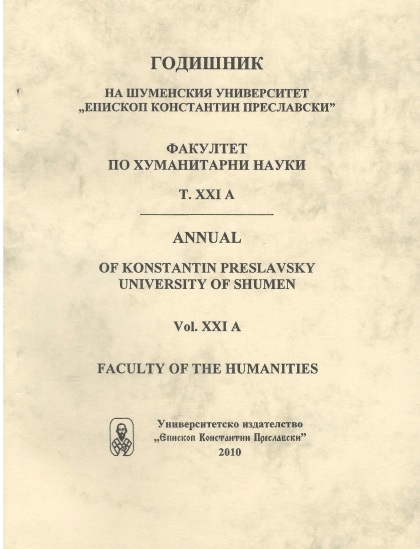Метафора и соматический культурный код
Metaphor and the somatical code of culture
Author(s): Elena StoyanovaSubject(s): Cognitive linguistics
Published by: Шуменски университет »Епископ Константин Преславски«
Keywords: somatical cultural code; metaphor; phraseology
Summary/Abstract: The somatical code is an ancient cultural code, in the formation and lingual representation of which, the basic role belongs to the metaphor, with the help of which, people relying on the knowledge of their own body, commensurate objects and phenomenon of its surroundings. Metaphor becomes a necessary instrument in man’s cognition of the world and it’s a fixation in the language. The process of metaphorizing consists of several stages: living, figurative, „the withered” and “effaced” metaphors. The last three stages serve as a characterization of steady metaphor (phraseological units). The somatical word ‘eye’ is characterized with the highest level of phraseological activity, because of the specific character of cognitive human activity. First of all, humans’ connection with the world around is achieved by the means of perceptive organs. Phraseological units with the component ‘eye' affect on specific character of perseption and understanding of the world, conformed under authority of figurative (mythological) thinking. Metaphors, lying at their basis, are the peculiar reflections of mythical ideas of the people, by realization in phraseological units of the perceptive-receiving type of descriptive Gestalt-structure, which is used as a original diagram of figurative memory and as a connecting link between language and culture. By means of correlation between associative-figurative-based phraseological units with signs of culture fulfils their cultural interpretation. Moral prescription of Christianity, symbols, standards, myths, mythologemas and other, are sources of cultural interpretation of phraseological units.
Journal: Годишник на Шуменския университет "Епископ Константин Преславски". Факултет по хуманитарни науки
- Issue Year: XXI/2010
- Issue No: 1
- Page Range: 4-35
- Page Count: 32
- Language: Russian

